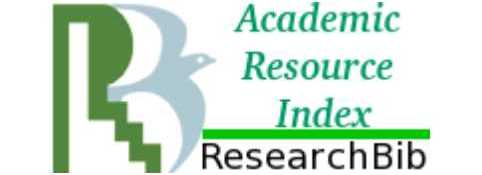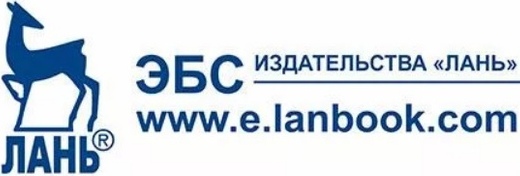Changing the professional behavior of journalists in the context of the transformation of the mass media institution
In the modern scientific paradigm, there is an emerging need for a sociological interpretation of the performance of social functions by journalists under conditions of radical changes in the institution of the media, due to the economic, sociocultural, and technological changes of recent years. The transformation of the media and media space has not only transformed modern society into a mediaized society, but has also seriously changed the technologies of professional journalists' work and the practices of their interaction with bloggers, social network activists, business structures, and the authorities. The article identifies the main characteristics of the transformation of the institution of the media: 1) the introduction of digital technologies for transmitting information and the virtualization of the information space; 2) the active position of the independent media and new media in changing public consciousness and the estimates of the population; 3) the high level of competition among actors in the media space; 4) the globalization of the information space, blurred borders and unified standards. The social positions and functions of the media institution are being transformed along with the modernization of society. In the last ten years, the structure of the Russian media space has changed dramatically, which in general corresponds to the trends in changes in the social institution: the globalization of communication processes associated with the virtualization of media space, the legalization of "network publications," the universalization and multitasking of journalists' professional activities. Journalists feel a duality of professional identification: on the one hand, they are part of the market mechanism for producing and selling information; on the other, they are active participants in civic processes. The majority of media professionals consider it necessary for their profession to participate in the development of civil society; at the same time, only half of them link their professional activity to its internal aspects and purposes. Those professionals who work in traditional or online publications and simultaneously run their own blog or cooperate with independent online platforms feel more confident professionally. They are more likely to be innovative in the profession, capable of improvement and new functions of the media institution.
Figures





Shinyaeva, O. V., Kamanina, V. Ev. (2021), “Changing the professional behavior of journalists in the context of the transformation of the mass media institution”, Research Result. Sociology and management, 7 (2), 69-87, DOI: 10.18413/2408-9338-2021-7-2-0-6.


















While nobody left any comments to this publication.
You can be first.
Weber, M. (2003) Political Works (1895-1919), Praxis, Moscow, Russia. (in Russian)
Amzin, A., Gatov, V. and Galustyan, A. (2016), How New Media Changed Journalism. 2012-2016, Faculty of Humanities, Moscow, Russia. (in Russian)
Giddens, E. (2005), Organization of Society. Essay on the theory of structuration, Academic project, Moscow, Russia. (in Russian)
Davidov, S. G. and Nemudrova, T. A. (2011), “Media Consumers: an Experience of Typology”, Sociological Journal, (1), 74-81. (in Russian)
Dzyaloshinskiy, I.M. (2012), “Modern periodicals: media matrices as the basis of the concept”, Bulletin of Moscow University. Series 10 “Journalism”, (5), 35-46. (in Russian)
Dzyaloshinsky, I. M. (2005), A field for professionals or a clearing for amateurs. Social journalism: profession and position, Agency of social information, Moscow, Russia. (in Russian)
Zadorin, I. V. (2019), “Dynamics of the main communicative practices of Russians”, Communications. Media. Design, 4 (3), 63-89. (in Russian)
Zheleznyakov, S. I. (2017), “Contradictions of processes of mass communication in modern society“, Theories and problems of political research, 6 (1A), 232-240. (in Russian)
Zasursky, Ya. N. (1998), Editor's Foreword, in Sibert, F. S., Schramm, W. and Peterson, T. Four theories of the press, Vagrius, Moscow, Russia. (in Russian)
Internet in Russia in 2019: State, Trends and Development Prospects (2020), Industry report, Moscow, Russia. (in Russian)
Castells, M. (2000), Information Age: Economy, Society and Culture, GU HSE, Moscow, Russia. (in Russian)
Kiria, I. V. (2005), “Digital Schism" and the Globalization of Media and ICTs”, Bulletin of Moscow University. Series 10. Journalism, (4), 66-86. (in Russian)
Kolesnichenko, A. V. (2017), “Transformation of journalistic work under the influence of new technologies: information search, genres of media texts, editorial culture”, West. Moscow University. Ser. 10. Journalism, (5), 51-71. (in Russian)
Lazutina, G. V. and Pankeev, I. A. (2018), “Self-regulation in journalism: levels, aspects, tools”, MediaAlmanakh, (3), 14-22. (in Russian)
Lozovskiy, B. N. (2011), “Russian mass media: portfolio of orders for modernization”, Izv. Ural state un-that. Ser. 1: Problems of education, science and culture, (2), 7-12. (in Russian)
McQuayle, D. (2013), Journalism and Society, MediaMir, Moscow, Russia. (in Russian)
Merton, R. (2006), Social theory and social structure, AST, Moscow, Russia. (in Russian)
Miroshnichenko, A. (2011), When the newspapers die, Knizh. mir, Moscow, Russia. (in Russian)
Nazarov, M. M. (2002), Mass communication in the modern world: analysis methodology and research practice, Editorial, Moscow, Russia. (in Russian)
Russian periodicals. State, trends and development prospects (2020), Industry report. Federal Agency for Press and Mass Communications [Online], available at: https: //fapmc.gov.ru/mobile/activities/reports/2020/pechat3.html/. (in Russian)
The image of journalists in the mass consciousness (2018), Analytical Report of the Zircon Research Group [Online], available at: https: http://www.zircon.ru/upload/iblock/b0d/Obraz_zhurnalistov-2018_otchet.pdf. (in Russian)
Parsons, T. (2005), Coordinate system and general theory of action: culture, personality and place of social systems, Moscow, Russia. (in Russian)
Polynov, V. A. (2017), “Regional news agencies in a new communication environment“, Questions of theory and practice of journalism, 6 (1), 105-118. (in Russian)
Sobachkin, A. Yu. (2019), “The social significance of the media institute”, Theory and practice of social development, 12(142), [Online], available at: https://cyberleninka.ru/article/n/obschestvennaya-znachimost-instituta-smi. (in Russian)
Habermas, J. (2016), Structural change in the public sphere: research on the category of bourgeois society, Ves mir, Moscow, Russia. (in Russian)
Sharikov, A. V. (2012), “The theory of media education”, Russian Journal of History, Theory and Practice of Media Pedagogy, (4), 61-76. (in Russian)
MediaOutlook. An overview of the entertainment and media industry: forecast for 2019-2023 (2019), [Online], available at: https://www.pwc.ru/ru/publications/mediaindustriya-v-2019.html. (in Russian)
Herman, E. S. and Chomsky, N. (2002), Manufacturing consent. The political economy of the mass media, New York, USA. (inRussian)